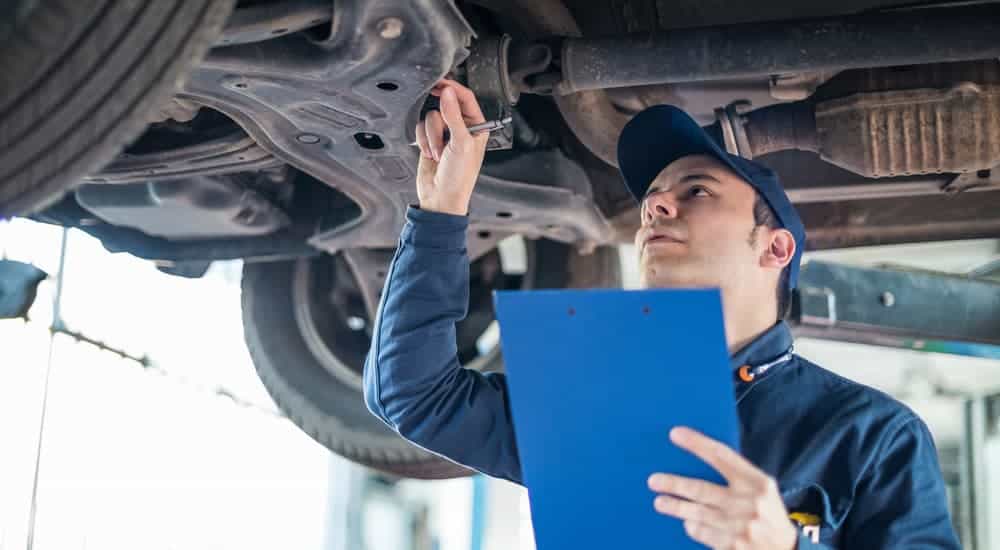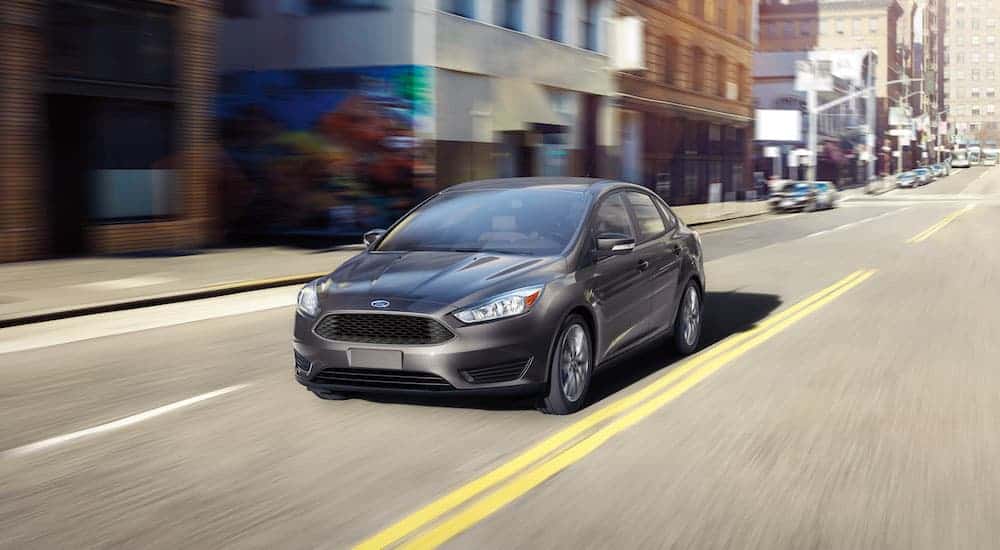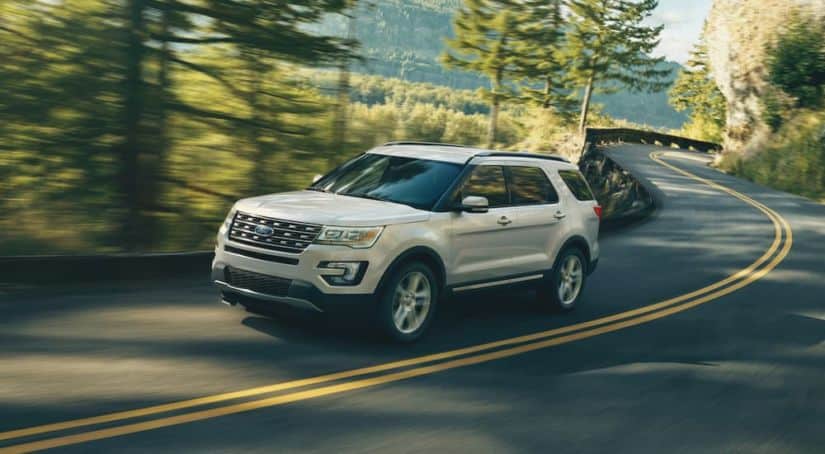When you start poking your nose around some used car lots, you might see some vehicles are listed as “used cars,” and others are listed as “certified pre-owned cars.” You may end up wondering what the difference is between these two kinds of vehicles. After all, both of these vehicle types are used, so why are they called two different things? Well, it’s not sales speak. It’s not trying to pull a fast one over on you. Instead, most manufacturers offer certification programs for qualifying used vehicles. This isn’t a sticker the dealership can just slap onto the car, though. It needs to jump through a few hoops and prove it is, in fact, deserving of this certification. There are some benefits to you as a buyer when purchasing something that is certified pre-owned. But what benefits do you receive? If you’re looking at a used Ford, here is everything you need to know regarding a Ford certified pre-owned vehicle.
Who Certifies The Vehicles?
You’d like to say you could trust just any used car salesman, but let’s get real here for a moment. There’s a reason used car salespeople have earned their reputation for being, well, not the most trustworthy. It’s because back in the day, they would try just about any tactic to sell just about any vehicle. Sure, there are new lemon laws and other regulations in place, but there’s just something fishy about those pop-up corner lots. You know, the ones that have maybe a dozen cars and a shed for an office? Well, those kinds of locations are not able to sell certified pre-owned vehicles. Instead, a Ford factory-trained dealer technician will perform the complete inspection. Only Ford factory-trained technicians can issue the approval of these inspections.
Now, some mechanics can receive Ford certification and not work currently within a Ford dealership. So, if you see a Ford certified pre-owned vehicle and it’s not being sold at an officially recognized Ford dealership, you will want to ask to see their mechanic’s credentials. If they are unable to produce these credentials (or they won’t), then there is a good chance the certification is not authenticated.

The Mileage And Model Basics
Before moving any further with certification, a vehicle needs to be under a specific mileage and model year. For starters, it needs to be less than six years older than the current model year. This means even if a vehicle on the lot is currently a certified pre-owned vehicle, if upon the next model release, it hits the seven-year mark, it will lose its qualification.
The next step is the mileage. The vehicle needs to have less than 80,000 miles on the odometer reading. As long as it checks off both the model year and mileage readings, it will qualify to move onto the next step of certification.
The Inspection
The inspection is what the Ford factory-trained dealer technician will perform. In total, it is a 172-point inspection where everything inside the vehicle and out is tested and looked into. This includes looking through the vehicle history, performing a road test, inspect the appearance and condition of both the inside and outside of the vehicle, perform a full diagnostics report, comb through the underbody and underhood components, as well as inspect any convenience and hybrid system features.
If something does not pass inspection and can be updated or replaced, it will be replaced with a factory-authorized part. This means it will not receive a junkyard part, nor will it receive a third-party component. It will receive the exact part that would have been used in the factory during manufacturing. If the part cannot be replaced, it will not receive a certification.
The CARFAX Report
During the 172-point inspection, the vehicle’s history will be dug through with a CARFAX report. This is important because there might be issues with the vehicle that is not immediately apparent. For example, the vehicle may have sustained flood or fire damage. This kind of damage can have lingering effects. Due to this, cars with extensive flooding and fire damage will not qualify for pre-owned certification. The vehicle history report will also provide vehicle title history, accident history, branded title, indicate whether it was a salvaged vehicle, or if it sustained any frame damage.
It’s Certified. Now What?

Alright, so that used vehicle you have an eye on is certified. Now what? Beyond peace of mind, does it offer anything else? Yes, it does. It provides some rather extensive benefits you simply are not going to get with a regular used vehicle.
For starters, there is a comprehensive certified pre-owned limited warranty coverage. This covers over 1,000 components for the first 12 months or 12,000 miles of your vehicle (whichever comes first). This includes both front and rear-wheel drive vehicles, your vehicle’s transmission, the engine, brakes, steering issues, the suspension, electrical system, safety systems, all factory-installed audio equipment, HVAC hardware, and other components. With these kinds of features, you won’t need to worry about buying a lemon, as everything will be covered and repaired within the first 12 months or 12,000 miles.
Beyond the limited time warranty, it also comes with a limited powertrain warranty. This covers the engine and transmission for up to seven years or 100,000 miles (whichever comes first). It is important to note that this is from the point of the vehicle being new and not from when you buy it. So, if the vehicle is four years old and has 50,000 miles on it, you’ll still have three years and 50,000 miles left of the powertrain coverage.
The powertrain limited warranty coverage can be transferred to any future owner at no cost (which is excellent if you’re buying the vehicle with plans of transferring it to your kid). Plus, there is a 24-hour roadside assistance service and the Ford Extended Service Plans, which will provide additional coverage that is offered at any Ford or Lincoln dealership.
One of the best ways to learn more about specific vehicles is to talk to your local Ford dealership with regards to some of the cars that are currently listed as certified pre-owned vehicles on the lot.
Each Manufacturer Is A Bit Different
It is important to note that these regulations are not necessarily always going to fall true for every manufacturer. Different manufacturers have different certification practices. In fact, sometimes different divisions under the same ownership have different qualifications. Due to this, what might qualify for a Ford may not be eligible as a Lincoln. So keep this in mind when you’re looking at used car lots out there. Also, it is important to understand that usually, a dealer that is associated with a specific brand (such as it is an officially licensed dealer to sell new Fords), will carry certified vehicles from that particular manufacturer because the mechanics on hand are certified mechanics. So, a Honda dealership is more likely to have certified pre-owned Hondas because of the Honda certified mechanics on hand. In contrast, a Lincoln dealership is more likely to have certified pre-owned Lincolns, and so on. Whatever you decide to do, though, know that there are all kinds of benefits with buying a vehicle that showcases that certified pre-owned sticker.



